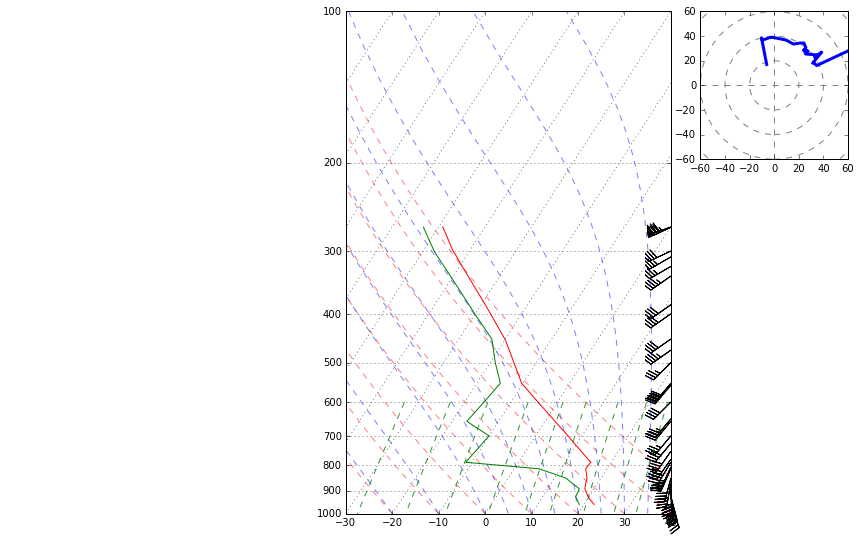# Create a new figure. The dimensions here give a good aspect ratio
fig = plt.figure(figsize=(9, 9))
# Grid for plots
gs = gridspec.GridSpec(3, 3)
skew = SkewT(fig, rotation=45, subplot=gs[:, :2])
# Plot the data using normal plotting functions, in this case using
# log scaling in Y, as dictated by the typical meteorological plot
skew.plot(p, T, 'r')
skew.plot(p, Td, 'g')
skew.plot_barbs(p, u, v)
skew.ax.set_ylim(1000, 100)
# Add the relevant special lines
skew.plot_dry_adiabats()
skew.plot_moist_adiabats()
skew.plot_mixing_lines()
# Good bounds for aspect ratio
skew.ax.set_xlim(-30, 40)
# Create a hodograph
ax = fig.add_subplot(gs[0, -1])
h = Hodograph(ax, component_range=60.)
h.add_grid(increment=20)
h.plot(u, v)
# Show the plot
plt.show()
